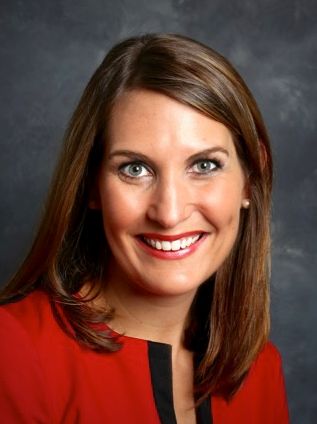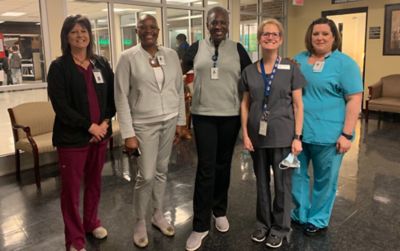St. Jude Family of Websites
Explore our cutting edge research, world-class patient care, career opportunities and more.
St. Jude Children's Research Hospital Home

- Fundraising
St. Jude Family of Websites
Explore our cutting edge research, world-class patient care, career opportunities and more.
St. Jude Children's Research Hospital Home

- Fundraising
Bridging the Gap: INVESTing in HPV Vaccination for Rural Youth
Wide Open Spaces is a new series of articles to be included in our program’s monthly newsletter starting this month. These articles will address ways to improve HPV vaccination with rural communities. We invite guest contributors to share information on how they are working to improve HPV vaccination in rural areas. If you are interested in contributing, please email us at PreventHPV@stjude.org.
In 2019, data from the Centers for Disease Control and Prevention (CDC) showed a concerning trend in HPV vaccination—youth in rural areas of the U.S. were initiating and completing the HPV vaccination series at lower rates than their urban counterparts. Many factors contributed to this rural-urban gap, including access-related challenges, missed opportunities for strong provider recommendations, and parent/caregiver concerns about the HPV vaccine. The onset of the COVID-19 pandemic amplified existing barriers and exacerbated feelings of mistrust and vaccine hesitancy in many rural communities.
Within this challenging context, an interdisciplinary team of school health professionals and researchers in North Carolina and South Carolina set out to develop a school-based HPV vaccination promotion program for rural communities. With support from the CDC, the team gathered input from parents and caregivers, school administrators, school nurses, and public health professionals and used that information to develop a program for rural middle schools called INVEST. INVEST stands for INcreasing VaccinE uptake among Southern Teens.
The INVEST program promotes local school nurses as trusted, reliable sources of information about HPV vaccination. The program includes educational materials that present HPV vaccination as an important part of overall adolescent health. With a variety of colorful materials (e.g., monthly newsletters, flyers), families are provided with messaging that HPV vaccination is cancer prevention and are connected to local resources to access vaccination services. Information about HPV vaccination is woven into a comprehensive adolescent health program, giving families important information on other topics such as diet/nutrition, sleep, physical activity, and puberty. INVEST materials are customizable for each school, featuring quotes, pictures, and contact information from the local school nurse.

Sayward E. Harrison, PhD is an associate professor of psychology at the University of South Carolina. Dr. Harrison has a PhD in Health Psychology and a specialization in the field of Pediatric School Psychology. Her research focuses on improving the health and well-being of youth who are impacted by acute and chronic health conditions.
While school nurses are well-equipped to talk with parents/caregivers about vaccines required for school enrollment, they may be less confident in talking about other vaccines, like HPV vaccination. Therefore, the INVEST program also includes professional development for school nurses, training them in topics such as safety and efficacy of the HPV vaccine, how to have difficult conversations with families, and using motivational interviewing with those hesitant about HPV vaccination. When INVEST was implemented in two partnering school districts in North Carolina and South Carolina, middle school nurses worked closely with the implementation team, completing monthly quality improvement check-ins, providing feedback on implementation, and serving as local champions to promote the benefits of HPV vaccination to families and the community at large.

INVEST was implemented in two partnering school districts in North Carolina and South Carolina, where middle school nurses, like these from Haywood School, worked closely with the implementation team.
In addition to building capacity among school nurses, the INVEST program also features a social media campaign that can be rolled out on various platforms, such as Facebook, X (formerly known as Twitter), or social media resources can also be housed on school websites. One school district took things a step farther by using their robocall system to send out helpful reminders to parents and caregivers about the importance of the HPV vaccination. They also enlisted a mobile clinic to deliver HPV vaccination services at local school sites.
If you are interested in implementing INVEST in a middle school near you, the materials are free to use and customizable—check them out at https://www.scicvax.org/projectinvest.
The research described above was supported by a cooperative agreement (U01IP001095) with the Centers for Disease Control and Prevention. The findings and conclusions in this report are those of the authors and do not necessarily